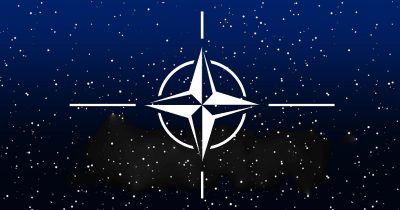NATO Enters New Warfighting Domain in Space

All Global Research articles can be read in 51 languages by activating the “Translate Website” drop down menu on the top banner of our home page (Desktop version).
Visit and follow us on Instagram at @crg_globalresearch.
***
The head of the North Atlantic Treaty Organization’s North American command, General André Lanata, recently visited U.S. Space Command in Colorado Springs, Colorado. The general, as all top commanders of NATO’s Allied Command Transformation (described as NATO’s Warfare Development Command) in Norfolk, Virginia have been since his nation rejoined the NATO Military Command structure in 2009, is French. As the Supreme Allied Commander Europe is always American and the Deputy Supreme Allied Commander Europe is always British when he’s not German.
While there he met with General James Dickinson, Commander of the United States Space Command; General Glen VanHerck, Commander of the United States Northern Command and the North American Aerospace Defense Command; and Lieutenant-General Alain Pelletier, Deputy Commander of North American Aerospace Defense Command.
NATO officially declared space its newest operational domain in 2019, adding to its other four battlefields: air, land, sea and cyberspace. It is currently setting up a NATO Space Centre at its Allied Air Command headquarters in Ramstein, Germany. The thirty-nation military bloc will soon be conducting missions and operations in space; including but surely not limited to communications, satellite imagery and “protect[ing] Allied space systems.”
It identified among other concerns this seemingly inevitable mention of its two global – and more than global – adversaries:
“Space is becoming more crowded and competitive, satellites are vulnerable to interference. Some countries, including Russia and China, have developed and tested a wide range of counter-space technologies.”
The bloc’s main military body, the Military Committee, appointed its two strategic commands – Allied Command Transformation and Allied Command Operations – to initiate plans to expand military activities into space by creating a NATO Space Working Group. To guarantee “unfettered utilization of Space.” From the North Atlantic to the Northern star.
In 2019 NATO’s top civilian body, the North Atlantic Council (consisting of the ambassadors of all NATO member states), approved the adoption of the NATO Overarching Space Policy. The Space Policy as it’s now called was confirmed at a defense ministers’ meeting in the same year.
Having seventy members and partners on six continents is not enough to satisfy the military alliance. It has now added space to its ever-expanding mission.
*
Note to readers: Please click the share buttons above or below. Follow us on Instagram, @crg_globalresearch. Forward this article to your email lists. Crosspost on your blog site, internet forums. etc.
Featured image is from Anti-bellum

